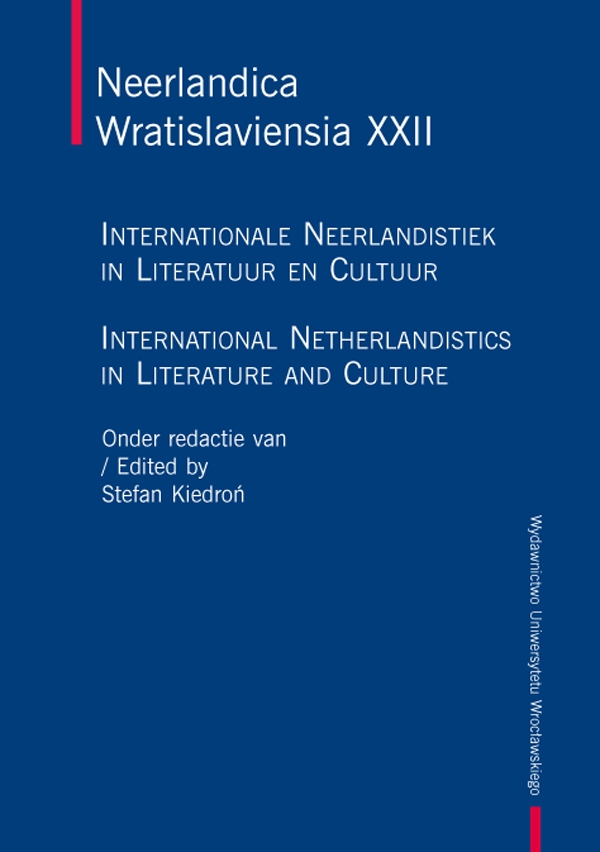

Artykuły

Foreword to the Theme Issue ‘International Netherlandistics in Literature and Culture’
In this issue of Neerlandica Wratislaviensia we present contributions on one overarching topic: ‘International Netherlandistics in Literature and Culture.’ Their authors explore and search for the presence of Netherlandic literature and culture not in the Low Countries themselves — but beyond their borders, in far off countries where the traces of the Netherlandic culture can still be found today.
Six Netherlandists from six different countries present the results of their research that document this cultural and literary presence of the Low Countries spanning over three centuries 19th, 20th and 21st century across four continents from North America and South America over Europe up to Asia.
Among these contributions our readers can find the exposition of the little known motifs in the oeuvre of a very well known non-Dutch personality. In his analysis of Slave Narrative from 1850, Jeroen Dewulf, head of the Queen Beatrix Chair at the University of California in Berkeley, delves into the Dutch facets of the female icon of the American abolitionism and campaigner for women’s rights in the United States of the 19th century, Sojourner Truth 1797–1883. The question of the cultural identity of Indonesia under Dutch influence is examined by Achmad Sunjayadi, director of the Dutch Studies Programme at the Universitas Indonesia in Jakarta. His discussion focuses in particular on the history of the Dutch East Indies Tourism in the late 19th and the 20th centuries, up to the Second World War.
In this theme issue, the readers will also find contributions tackling the literary connections between the Netherlandic culture and remote regions — in the past as well as today. Kim Andringa, a literary scholar at the Université de Liège, discusses in her paper the motif of creolisation, more specifically the manifestations and deployments of this motif in the oeuvre of the Antillean writers Cola Debrot 1902–1981, Boeli van Leeuwen 1922–2007 and Tip Marugg 1923–2006.
Two articles of this theme issue take stock of the most recent developments within the ‘International Netherlandistics as Culture’ in the broad sense of the term. Lila Gobardhan-Rambocus from Paramaribo presents the language policy in Suriname after its independence in 1975. As chair of the Suriname Negotiations Commission for Accession of Suriname to the Dutch Language Union 2003, she is the expert in the field of culture and language policy in this country. Eric Mijts from Oranjestad, dean of the Faculty of Law at the University of Aruba, outlines in his contribution different aspects of the Antillean identity observable in language, culture and literature. His text corresponds with that by Kim Andringa and pictures a comprehensive portrayal of the Kingdom of the Netherlands stretching ‘from Groningen up to Westpunt-Aruba.’
The last contribution in this issue is an analysis of the ‘International Netherlandistics Anno Now’. Stefan Kiedroń, member of the Board of the Internationale Vereniging voor Neerlandistiek International Society for Netherlandistics in the years 2000–2009, representing in it the region of Central and Eastern Europe, describes the worldwide developments that took place in this discipline at the turn of the 20th century. He also charts its possible perspectives and directions it could take in the decades to come — under the slogan ‘Durable Netherlandistics.’
Throughout this theme issue the Netherlandic literature and culture appears as the red thread. This can be witnessed not in but, emphatically, outside the Netherlands. This is truly the International Netherlandistics.